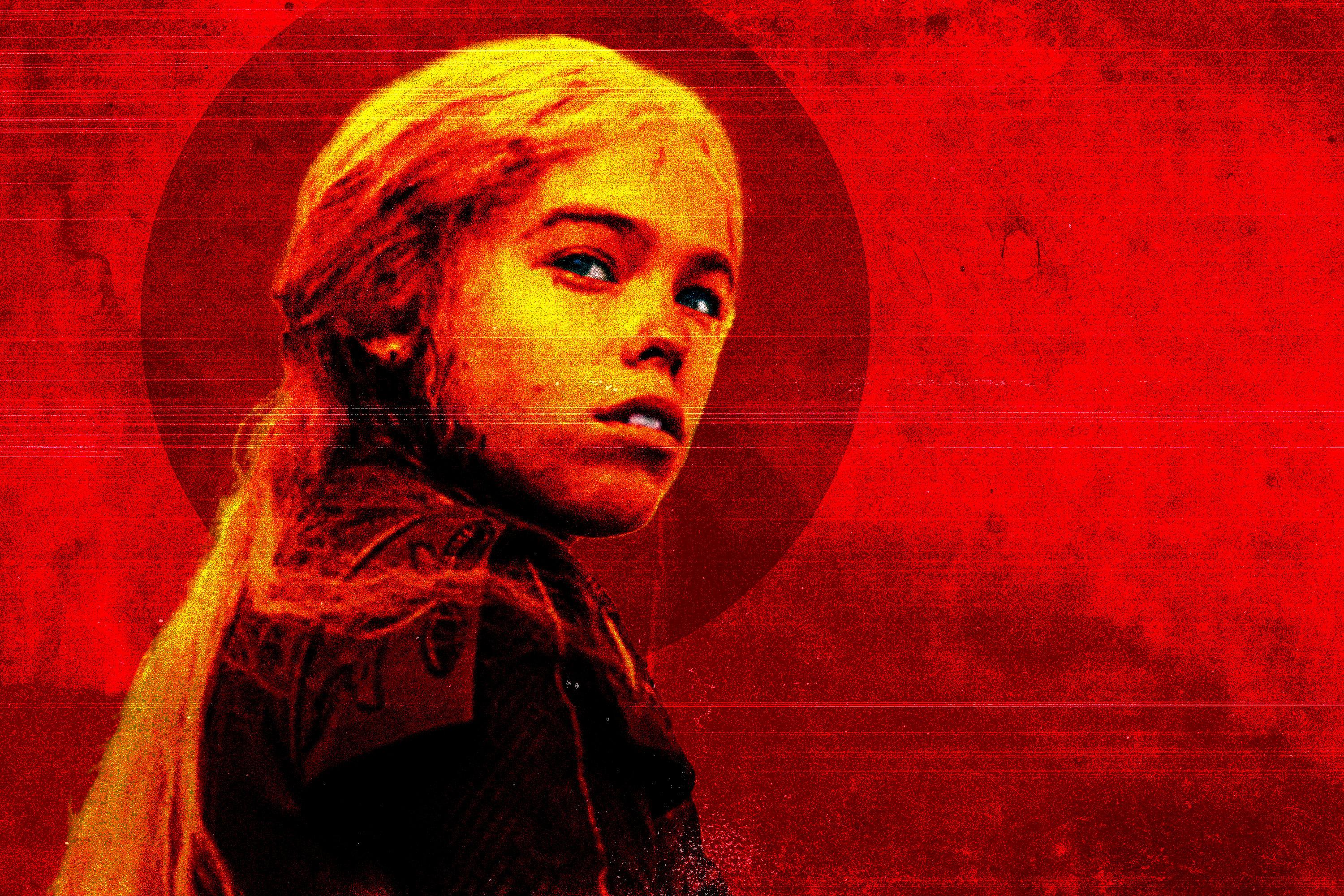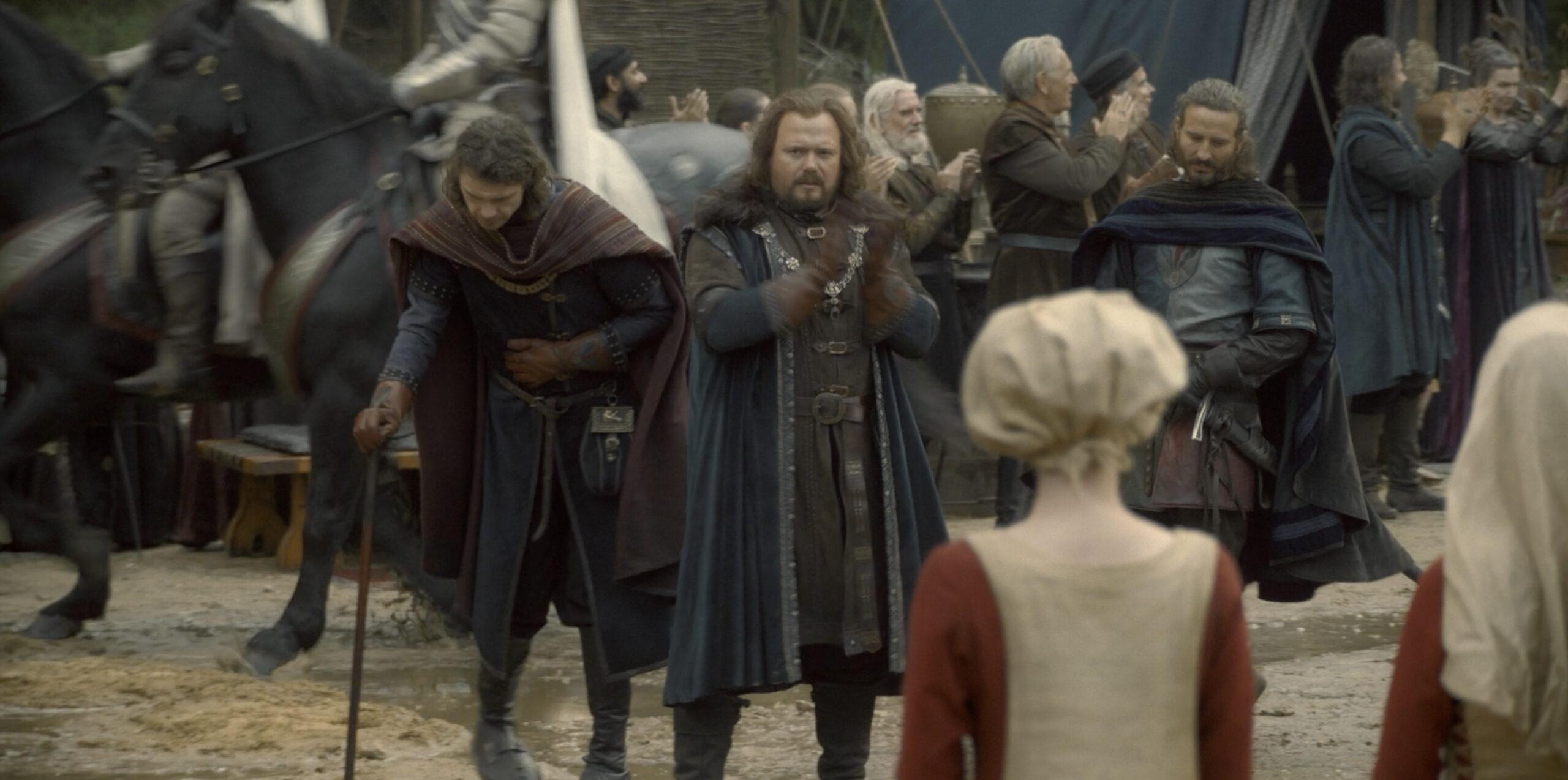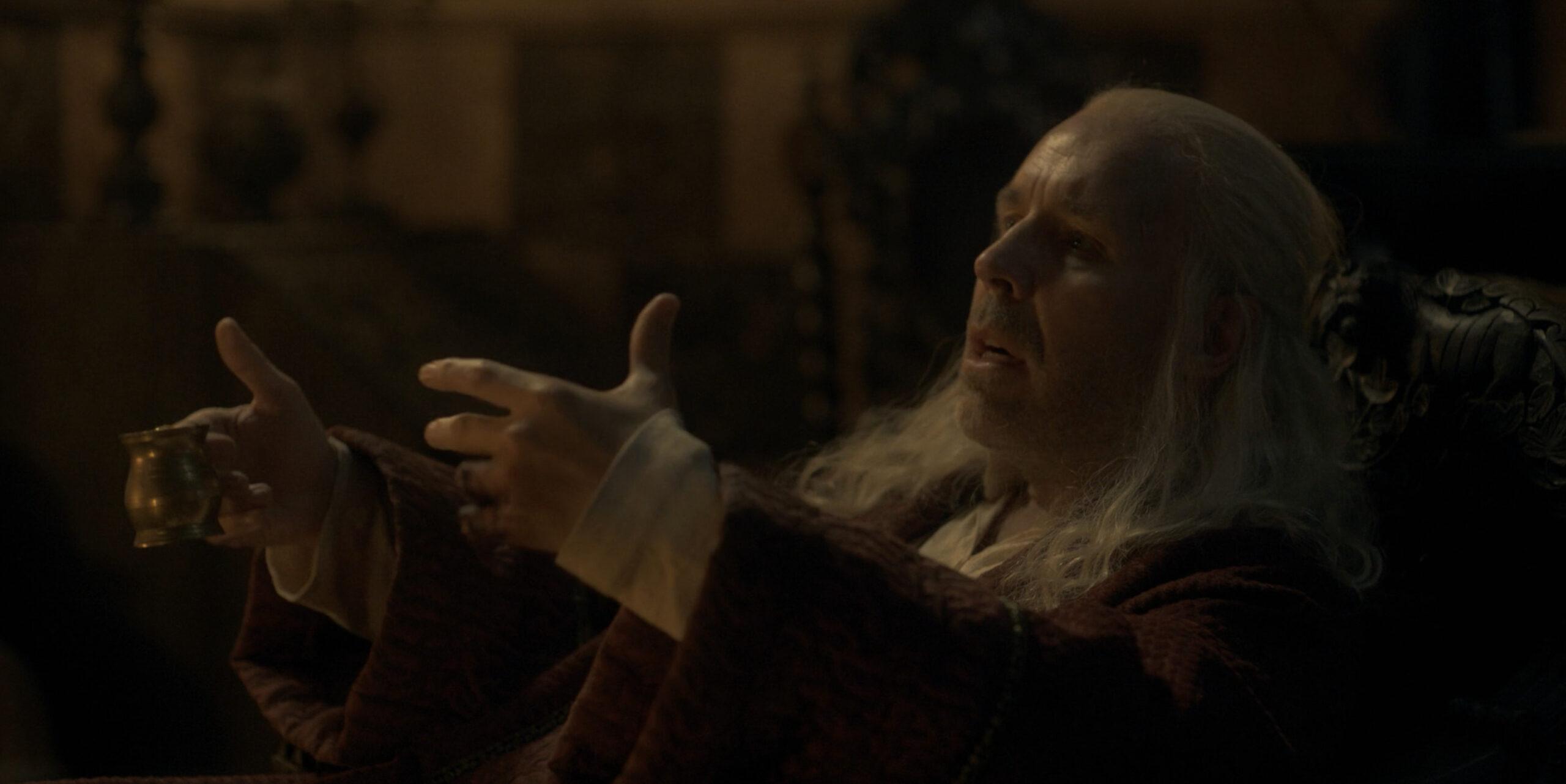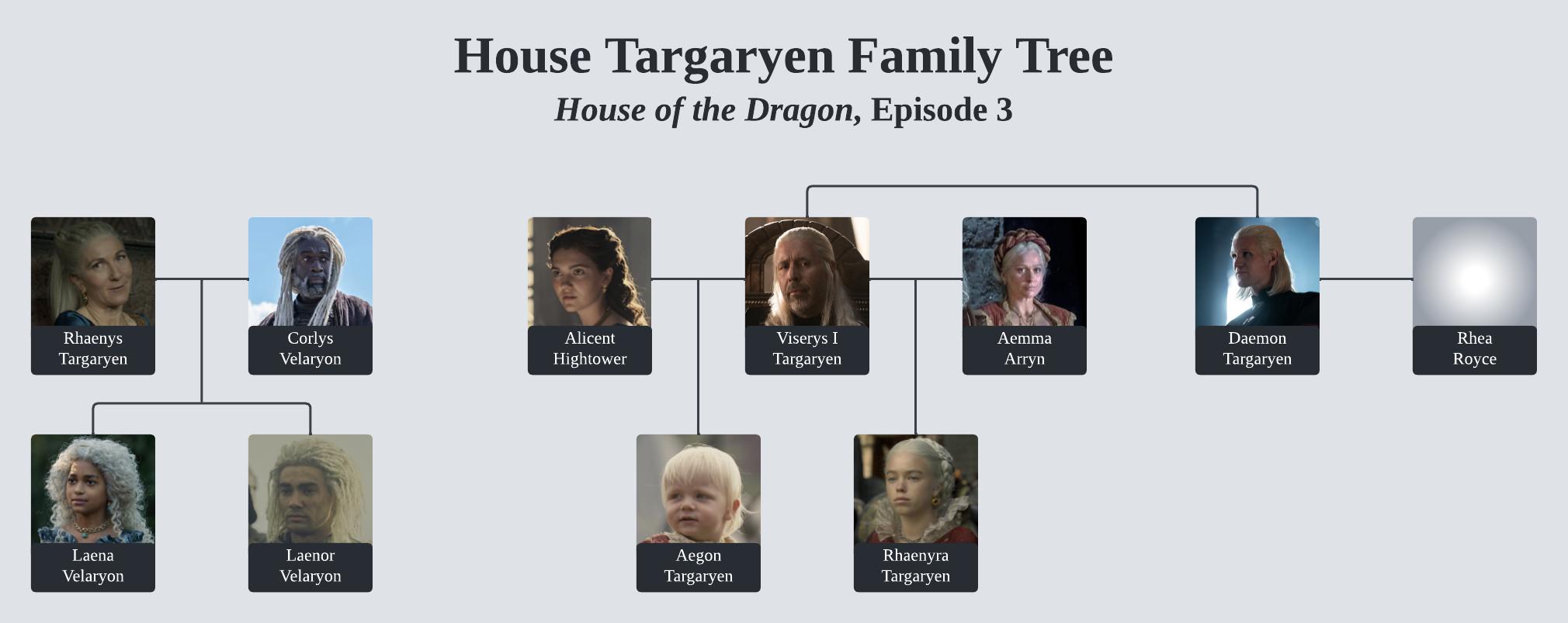‘House of the Dragon’ Episode 3 Breakdown: The Most Eligible Targaryen
A spoiler-free breakdown of “Second of His Name,” featuring info on Rhaenyra’s need to get hitched, a ‘Game of Thrones’ parallel, a dragonrider update, and more
This episode of House of the Dragon saw the beginning and end of the War for the Stepstones. A three-year losing effort was turned around by one hastily planned gambit, and down went the Crabfeeder. First, though, let’s focus on the tension building at court, particularly around Rhaenyra and her marriage prospects.
Deep Dive of the Week: Does Rhaenyra Have to Get Married?
Marriage is the big topic of this week’s episode, with seemingly half the lords of Westeros trying to find a match for Rhaenyra. But before we find the perfect husband for Rhaenyra, there’s a question that needs to be answered: Does she even have to get married?
Let’s look back at recent history. As Larys Strong tells King Viserys, “King Jaehaerys ruled over half a century of peace while his children drove him to the edge of madness, his daughters in particular.” Rhaenyra seems to be doing something similar to her father, Viserys. As such, it’s worth looking at what some of those daughters can teach us about the pressure Rhaenyra is under.
As Larys notes, Jaehaerys ruled over the realm for 55 prosperous, peaceful years. During that time, he and his sister-wife Alysanne had 13 children, yet Jaehaerys outlived nearly all of them, which is why a Great Council was needed in 101 AC and the throne was given to Viserys upon Jaehaerys’s death. While Jaehaerys found monumental success as a king, he wasn’t so lucky as a father—and three of his daughters in particular are worth considering.
Let’s start with Daella, Jaehaerys and Alysanne’s fourth daughter and eighth child overall. Daella was a quiet, shy girl who was slow to speak and read. Jaehaerys and Alysanne had planned for her to marry her older brother, Vaegon, but Daella was scared of him, and Jaehaerys and Alysanne had to look elsewhere. The search was arduous. Daella rejected suitor after suitor (including a young Corlys Velaryon). She came close to marrying a son of House Blackwood, an ancient house from the Riverlands whose history stretches back to the Age of Heroes, but when she learned that the Blackwoods follow the old gods, she was terrified she would go to hell for abandoning the Faith of the Seven.
As Daella approached the age of 16—and womanhood, in Westerosi culture—the situation became dire. Jaehaerys sarcastically offered to line up 100 naked men and let her pick one, no longer caring whom she married. (Alysanne remarked that doing so would only frighten the girl, to which Jaehaerys responded that 100 ducks would frighten her.) Since Daella could not read, even the Faith of the Seven wouldn’t take her. Her options were to marry, or become a silent sister, one of the handmaidens who attend to the dead.
In the end, it came down to a Baratheon, a Lannister, and an Arryn. Daella chose the Arryn, a Lord Rodrik, even though Rodrik already had four children from a previous marriage. Rodrik was kind and gentle with Daella, and together they had a daughter—Aemma Arryn, Viserys’s first wife and Rhaenyra’s mother. Despite the long path to get there, Daella’s marriage was happy, but it was sadly short-lived. Daella died in childbirth, as her daughter, Aemma, later would.
Next up is Viserra, Jaehaerys and Alysanne’s sixth daughter and 10th child overall. Viserra was everything Daella wasn’t. She was said to be the most beautiful of the Targaryen princesses of the time, and the flattery she received from the lords and knights of Westeros led to vanity. She used to play with her suitors, inventing elaborate challenges backed by promises of marriage that she did not intend to fulfill. But Viserra did have one potential husband in mind—her older brother Baelon, who was 14 years her senior. Baelon, who had lost his wife when Viserra was 13, was the heir to the Iron Throne, and Viserra desperately wanted to be queen. But Baelon wasn’t interested in his younger sister, and Alysanne arranged a match with Theomore Manderly, the Lord of White Harbor.
Viserra had no interest in Theomore, who had been widowed four times already. On the night before she was to ship off to White Harbor, she sneaked out of the Red Keep for a night of partying with some of her companions. At midnight, the group raced back to the Red Keep on their horses … and Viserra’s horse collided with one of her companion’s, and the princess was killed at the age of 15.
Finally, there is Saera, Jaehaerys and Alysanne’s fifth daughter and ninth child overall. Saera was a demanding, stubborn child—the first word she spoke was “no.” As Saera grew, she took a great interest in the men of King’s Landing. She had three favorites in particular, and one day in court (after a prank by Saera had turned into a scandal), she told her father that she was no longer a virgin—and that each of her three male companions believed that he was the person to take her maidenhead. Saera then went even further, saying that she should be able to marry all three, just as Aegon the Conqueror and Maegor the Cruel had taken multiple wives.
This could not stand. But while Jaehaerys and Alysanne debated what to do with their daughter, Saera escaped and attempted to steal a dragon. At that point, the only thing they could arrange was for Saera to be taken in by the Faith of the Seven. She was there for barely a year before escaping to Lys, where she took up work as a prostitute in a pleasure house. Saera never returned to Westeros (she might even still be alive during House of the Dragon; it’s unknown how long she lived), as the Targaryen family effectively disowned her.
The lives of Rhaenyra’s grand aunts offer some perspective on just how much pressure is on Rhaenyra to marry. Jaehaerys and Alysanne were prepared to essentially discard multiple daughters if they didn’t find appropriate husbands. This pressure is especially great for Rhaenyra given that she is the heir to the Iron Throne, whereas these daughters of Jaehaerys and Alysanne had upward of a dozen people ahead of them in the line of succession at times. As Viserys says, rulers “must marry for advantage, to forge alliances and bolster our strength.”
The truth of these words can be seen in Daenerys’s arc throughout A Song of Ice and Fire. Daenerys’s marriage to Khal Drogo was arranged by her brother Viserys and Illyrio Mopatis in order to secure the use of Drogo’s army in Viserys’s bid to take back the Iron Throne. After Viserys and Drogo die, Daenerys spends some time in the next few books weighing different marriage proposals—everyone wants to be married to the Mother of Dragons. It’s in A Dance With Dragons that she ultimately does choose a new spouse, Hizdahr zo Loraq (Hizdahr appears in Thrones, but they don’t marry in the show), in the hope that marrying someone of Ghiscari blood can help legitimize her rule of Meereen and bring peace to the city. The marriage does do that, though it is completely loveless (to say the least; it’s strongly implied that Hizdahr attempts to poison Dany). While Rhaenyra can’t look to Daenerys for wisdom, Daenerys shows us the importance of choosing the right husband for those who wish to rule.
There are virtually endless examples here. Noble houses don’t typically marry for love—they marry to improve their family’s station. Sometimes those marriages—like Catelyn Tully’s to Ned Stark—become successful and romantic unions. Sometimes—as with Cersei Lannister and Robert Baratheon—they devolve into sad chaos. But there are very few examples of highborn men and women refusing marriage altogether. That’s especially true of firstborn children like Rhaenyra.
So whom should Rhaenyra marry? That question takes us back to Lyonel Strong. As Lyonel details, a marriage between Rhaenyra and Laenor Velaryon would help mend the rift in House Targaryen, and it would give Rhaenyra influence over the wealthiest family in the realm, which controls a navy that accounts for roughly 40 percent of the realm’s ships. With House Velaryon’s support, Rhaenyra’s claim to the Iron Throne would be tough for anyone in Westeros to resist.
This is why Otto instead suggests young Aegon as a match. Despite the absurd age difference between Rhaenyra and her half brother, a marriage there would effectively end any schism between the two for the throne—and virtually assure the crown for Otto’s grandson. That Otto suggests Aegon while Lyonel suggests Laenor shows a stark difference between the two men and where their loyalties truly lie.
Still, there are other options. Jason Lannister, despite his boorishness, would also make a strong match, given the wealth and power of House Lannister. And in Fire & Blood, there are many more potential suitors for Rhaenyra, including members of House Bracken, House Blackwood, House Frey, House Tully, House Tyrell, House Oakheart, and House Tarly. At one point Viserys even floats the idea of wedding Rhaenyra to the Prince of Dorne (as Dorne is still an independent kingdom at this point, and a marriage there could bring the Dornish into the realm). As a dragonrider, Viserys’s firstborn child, and the current heir to the throne, Rhaenyra is easily the most eligible bachelorette in the realm. She’ll need to marry or endure the lords of Westeros buzzing around her for an eternity.
But as Rhaenyra states in this episode, she may not marry for station, but for desire. After all, her father did so. It remains to be seen whether that will be a good choice for either of them.
Quick Hits
RIP, Crabfeeder
So much for this season’s big bad! Zero lines of dialogue and all of a minute of screen time: Craghas, we hardly knew ye. Oh well, if Daemon hadn’t gotten you, a skin infection probably would have soon enough.
The Robert Baratheon parallels in the Kingswood
This week, we joined Viserys and the royal court on a hunt in the Kingswood. This event is not described in Fire & Blood, but it does bring to mind a similar event from the books: Robert’s royal hunt in A Game of Thrones.
In the books, just as Ned Stark is on the brink of untangling the true parentage of Robert’s children, a white hart is spotted in the Kingswood. White harts are basically giant white stags believed to have almost mythical properties, and Robert heads off at once to hunt it, taking with him “Lord Renly and Ser Barristan … along with Prince Joffrey, Sandor Clegane, Balon Swann, and half the court.” However, by the time the hunters find the deer, it is too late—wolves have devoured it. Robert is furious, and when he learns of a large boar roaming the Kingswood, he decides to go after it. We all remember how that ends—with Robert (who is very drunk, thanks to Lancel and Cersei) suffering a mortal wound that would destabilize the realm.
In the show, this great hunting trip gets simplified. There is no white hart—Robert goes straight after a boar. And he doesn’t take “half the court,” but seemingly only three companions: his brother Renly, his squire Lancel, and his Lord Commander of the Kingsguard Barristan Selmy. They don’t even have horses.
Well, that’s what the budget of Season 1 of Thrones gets you. In Dragon, we get a much more appropriate royal retinue, featuring feasts, an enormous camp, and too many companions to count. Viserys doesn’t even have to do much on this hunt other than feebly attempt a killing blow on a stag that has already been tied down and captured. Compared to Robert’s hunt, this hunt is somehow both much more grand and more pathetic.
The parallels between these two events are too many to ignore. Like Robert, Viserys doesn’t get the white hart he’s after. Also like Robert, he’s hammered out of his mind on wine. (Viserys’s father Baelon died from a burst appendix while on a hunt in the Kingswood, which may explain why the king is so dour on this trip.) And also like Robert, Rhaenyra and Ser Criston Cole run into a ferocious boar that attacks them. We get the stag, the boar, a lot of drinking, and a realm on the precipice of war—Dragon gave us the hunting scene that Thrones never could.
Finally, there is one last piece of symbolism to the hunt—Rhaenyra seeing the white hart. Otto says earlier in the episode that the white hart is the king of the forest, and that killing it would be a great omen for Viserys’s son, Aegon. But it’s Rhaenyra and Criston alone who glimpse the great stag—and Rhaenyra who lets the deer go. Like so many things in A Song of Ice and Fire, this could be a portent of what is to come … or it could be a misdirect. After all, it was wolves who killed Robert’s stag, not lions.
House Strong expands
Last week, I went over Lyonel Strong, Viserys’s master of laws. This week, his two sons entered the show. Here they are:

First is Larys Strong, Lyonel’s younger son. Larys is often called the Clubfoot, on account of a birth defect that causes him to walk with a cane and a pronounced limp. In Fire & Blood, Larys is described as a quiet man, but a cunning one.
His older brother is Harwin, and we get only a glimpse of him this episode. As Viserys mentions at one point, Harwin is nicknamed “Breakbones” and is known to be “the strongest knight in the Seven Kingdoms.” And while Lyonel nobly sidesteps the suggestion that Harwin could be marriage material for Rhaenyra, in F&B he is floated as a potential match for the princess.
For now, that’s really all there is to know about the two Strong brothers. But rest assured, we should see more of them in the show soon enough.
The Lannisters are back
This week brought the return of a familiar house via Jason Lannister, who joins the royal hunt in an attempt to woo Rhaenyra. Like the Lannisters from Thrones, the Lannisters some two centuries earlier also controlled Casterly Rock and its seemingly infinite supply of gold. It also seems that Jason shares some of the same haughty arrogance that many of his ancestors will exhibit centuries later, as well as House Lannister’s signature golden locks.
Jason isn’t the only Lannister who will appear on the show. He also has an identical twin brother, Tyland, who I think appeared briefly at the beginning of the hunt. There are a number of other Lannisters around Jason as well:

The only Lannisters of import in Fire & Blood are Jason and Tyland, so it’s not clear who these others are. But in any case, it’s important to note where the family stands right now in terms of all the politicking in King’s Landing. Tymond Lannister (who may or may not have been Jason and Tyland’s father; it’s unconfirmed) supported Viserys at the Great Council of 101 AC. That helps explain why Jason would assume that a male should inherit the throne—even if it doesn’t quite explain why Viserys seemed to treat him with such disdain.
The meaning behind “The Realm’s Delight”
When Viserys is rambling on about dreams to his wife Alicent, he laments how he named his daughter Rhaenyra the heir to the Iron Throne. “The Realm’s Delight,” he says. “I named her out of love.”
“The Realm’s Delight” is a nickname given to Rhaenyra when she was a child, shortly after Viserys was crowned king. Back then, Rhaenyra was Viserys’s only child, and he and Queen Aemma doted on their daughter. The rest of the royal court did as well. Here’s how F&B describes the early days of Viserys’s reign:
At the center of the merriment, cherished and adored by all, was their only surviving child, Princess Rhaenyra, the little girl the court singers dubbed “the Realm’s Delight.” Though only six when her father came to the Iron Throne, Rhaenyra Targaryen was a precocious child, bright and bold and beautiful as only one of dragon’s blood can be beautiful. At seven, she became a dragonrider, taking to the sky on the young dragon she named Syrax, after a goddess of old Valyria. At eight, the princess was placed into service as a cupbearer...but for her own father, the king. At table, at tourney, and at court, King Viserys thereafter was seldom seen without his daughter by his side.
Safe to say, those days are long gone. Half the nobles living in the Red Keep seem to be plotting how to use Rhaenyra for their own ends, and her “precocious” and “bright” nature has curdled into something a bit more cynical now that her best friend is her stepmother and she has a half brother to contend with for the crown.
Who was the singer in the godswood?
Rhaenyra first appears in this episode in the godswood, reading a book and listening to a singer. The song appears to be about Princess Nymeria, given the mention of thousands of ships on the run, which is a story of significance to Rhaenyra—one I detailed after Episode 1, which portrayed Rhaenyra and Alicent studying it in this same godswood. The inclusion of this singer, whom Alicent calls “Samwell,” though, felt like an Easter egg for Fire & Blood readers.
Fire & Blood is written as an in-universe history penned by a Maester Gyldayn, who authored the text for Robert Baratheon. That means that in contrast to the main A Song of Ice and Fire stories, which are written from an omniscient perspective, much of what we know of this period in Westerosi history is of dubious veracity. Gyldayn has to lean heavily on three primary sources—one of which comes from a court jester known as Mushroom.
Mushroom is a dwarf who served as a fool and entertainer for both Viserys and Rhaenyra, and the latter was especially fond of him. That made him an eyewitness to many important events in King’s Landing. Only … Mushroom is far from a reliable narrator. Most of his accounts are fantastically salacious, and half of the stories he tells end up involving his penis, which he claims was abnormally large. Still, while some of the debauchery Mushroom details is clearly embellished, some of the other accounts Gyldayn relies on have just as obviously been sanitized by sources that have their own biases.
Mushroom isn’t likely to appear in House of the Dragon. His inclusion would feel tonally out of place for the show, which is more grounded than the novels. Still, I think the inclusion of the singer in this scene was a nod from the showrunners to his character. Even in the show, Rhaenyra likes her entertainers.
Viserys is down some digits
Through three episodes, House of the Dragon has made a point to show that Viserys is basically falling apart physically. It started with a sore on his back that he claims came from the throne, and continued with him cutting his finger on the same spiky seat. Last episode things got so desperate that Grand Maester Mellos brought in maggots for the king. Well, those flesh-eating critters either didn’t work or worked too well, as Viserys is missing a couple of fingers now:

This is a perplexing departure from Fire & Blood. In the book, Viserys does lose two fingers after cutting himself to the bone on the Iron Throne, but it happens later in his reign. The maesters wash out the wound, but a fever sets in, and the amputation is a last resort to stop the infection. However, this is controversial—there is disagreement among some very important members of the court over whether the operation saved Viserys’s life or mutilated him unnecessarily. It’s a pivotal part of the book that raises the tension in King’s Landing and helps set the stage for the civil war that is to come. Yet it seems all this has been omitted from the show, which instead preferred to have the king lose his fingers off-screen.
Still, we’re left with a king who is not in good shape. Combine this development with Viserys’s thinning hairline, and His Grace is on his way to looking like the Crabfeeder. There has been some talk about vultures metaphorically feasting on the Targaryens—Viserys might soon experience that literally.
A new dragonrider enters the fray
We get a new dragonrider this episode in Laenor Velaryon, who has grown up very quickly since he was a young child at the tourney in Episode 1. (Keep in mind that Laenor is younger than his sister Laena, so he’s supposed to be roughly 14 at most here. Which, sure.) The dragon he is riding is Seasmoke, a “pale grey beast,” per F&B. It’s not clear when Laenor claimed Seasmoke (was this his first ride?), but that’s also true in the books, where on one page a child Laenor is described as being “bonded” to Seasmoke and many pages later has become a full-blown dragonrider.
However Laenor mounted Seasmoke, we now have four confirmed dragonriders in the realm. In addition to those two, Rhaenyra rides Syrax, Daemon rides Caraxes, and Rhaenys rides Meleys. Caraxes is the largest and fiercest of this group, but Meleys is said to be the swiftest. And with Seasmoke now seeing battle in the Stepstones, Syrax is the only dragon with no known battle experience. It’s worth keeping all of this in mind—if you hadn’t figured it out already, these dragons will soon be fighting more than greyscale-ridden pirates.
Someone get Daemon a helmet
It’s worth noting that Daemon’s uncle, Aemon, was killed by a crossbow bolt to the throat while fighting pirates from the Free Cities. It’s also worth noting that Aemon was the original rider of Caraxes—Daemon took over the dragon sometime after Aemon’s death. Knowing this, why did Daemon attempt his little gambit with nothing protecting his head?? He even possesses the coolest helmet in all of Westeros, but apparently he left it at home. Daemon is lucky that the Crabfeeder’s archers have the aim of Stormtroopers.
Family Tree Watch
Baby Aegon joins House Targaryen this week, and based on the length of the first two time jumps and Alicent’s swollen belly, we’ll have another Targaryen child very soon. Here’s the Targaryen family tree at the end of Episode 3:

Next Time On …
Here’s the preview for Episode 4:
Looks like next week we’ll get more info about Aegon the Conqueror’s prophecy, a new king, and a lot of hot goss.

